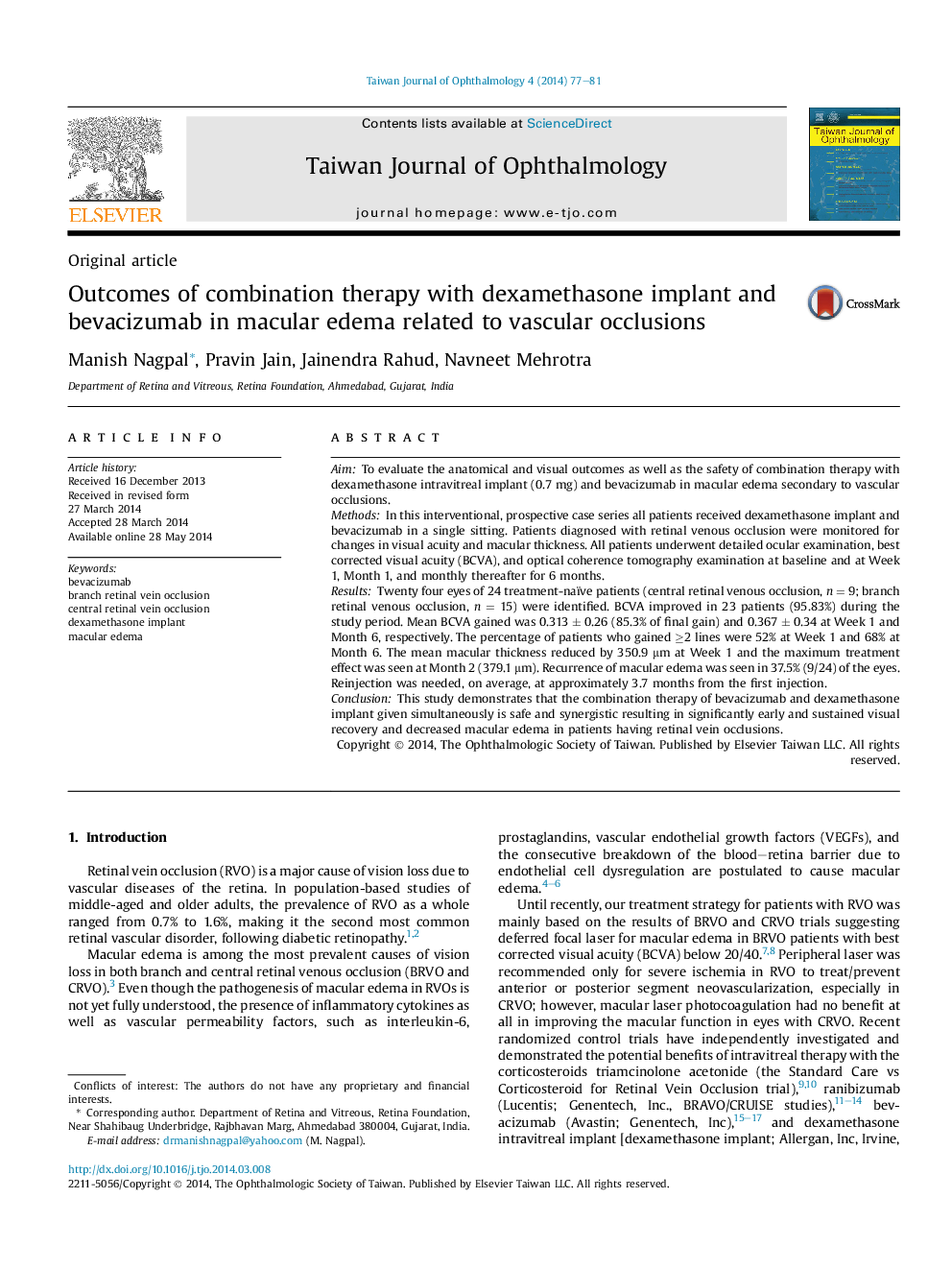| Article ID | Journal | Published Year | Pages | File Type |
|---|---|---|---|---|
| 4033445 | Taiwan Journal of Ophthalmology | 2014 | 5 Pages |
AimTo evaluate the anatomical and visual outcomes as well as the safety of combination therapy with dexamethasone intravitreal implant (0.7 mg) and bevacizumab in macular edema secondary to vascular occlusions.MethodsIn this interventional, prospective case series all patients received dexamethasone implant and bevacizumab in a single sitting. Patients diagnosed with retinal venous occlusion were monitored for changes in visual acuity and macular thickness. All patients underwent detailed ocular examination, best corrected visual acuity (BCVA), and optical coherence tomography examination at baseline and at Week 1, Month 1, and monthly thereafter for 6 months.ResultsTwenty four eyes of 24 treatment-naïve patients (central retinal venous occlusion, n = 9; branch retinal venous occlusion, n = 15) were identified. BCVA improved in 23 patients (95.83%) during the study period. Mean BCVA gained was 0.313 ± 0.26 (85.3% of final gain) and 0.367 ± 0.34 at Week 1 and Month 6, respectively. The percentage of patients who gained ≥2 lines were 52% at Week 1 and 68% at Month 6. The mean macular thickness reduced by 350.9 μm at Week 1 and the maximum treatment effect was seen at Month 2 (379.1 μm). Recurrence of macular edema was seen in 37.5% (9/24) of the eyes. Reinjection was needed, on average, at approximately 3.7 months from the first injection.ConclusionThis study demonstrates that the combination therapy of bevacizumab and dexamethasone implant given simultaneously is safe and synergistic resulting in significantly early and sustained visual recovery and decreased macular edema in patients having retinal vein occlusions.
